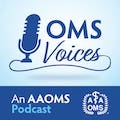What is TMJ?
When people say “TMJ,” they may be referring to the temporomandibular joint, but it is likely they are talking about temporomandibular disorders (TMD). TMD refers to not only joint disorders but also the muscles surrounding the joint. The TMJ is the most constantly used joint in the body and is located in front of each ear where the skull and jaw meet. The skull and lower jaw on each side is separated by a small, shock-absorbing disk made of cartilage. Each person has two joints, one on either side of their jaw, and one or both can be affected by a TMJ disorder.
What Causes TMJ Disorders?
Diagnosing a temporomandibular joint (TMJ) disorder involves a thorough history, physical examination, and diagnostic tests. A TMJ disorder can occur when:
- An injury occurs to the lower jaw or facial region.
- TMJ cartilage is damaged through arthritis, dislocation or erosion.
- Connective tissue diseases affect bony or soft tissues.
- Chronic grinding or clenching of teeth leads to disk damage.
- There is misalignment of the teeth or jaw.
- Inflammation of the muscles surrounding the TMJ.

OMS Voices Preview: TMJ Disorder: Causes, Symptoms and Treatments
Symptoms of TMJ Disorders
There are usually multiple factors that contribute to TMJ disorders and there can be a variety of symptoms associated with it.
An oral and maxillofacial surgeon (OMS) might suspect a TMJ disorder if a patient presents with any of the following symptoms:
- Difficulty opening and closing the mouth
- Jaw or cheekbone pain
- Pain or a tired jaw while eating
- Headaches or earaches
- Ringing in the ears
- Clicking or popping sounds when opening or closing the mouth
- Changes in bite
- Problems moving the jaw
- Pain when touching the TMJ area or the jaw muscles
TMJ Disorder Treatments
Many TMJ issues can be treated with conservative techniques and measures. Minimally invasive treatments for TMJ discomfort may include short-term use of medications such as anti-inflammatory drugs or muscle relaxants. Splint or bite plate therapy, physical therapy and stress management are often first-line treatments.
Patients may also require more invasive treatments for the relief of chronic TMJ pain. Surgery may be recommended and may include:
- Arthrocentesis – Sterile fluid is flushed (washed) through the joint.
- Arthroscopy – A scope is used to examine the joint, scar tissue is removed and the joint may be repositioned and/or the jaw bone is smoothed.
- Open Joint Surgery – Damaged tissue is repaired or replaced directly; bone may be reshaped or removed.
- Total or Partial Joint Replacement – In the most severe cases, patients may benefit from a total joint replacement or corrective jaw surgery.
Diagnose and Treat TMJ Disorders with an OMS
The diagnosis and treatment of TMJ disorders can be complex and might require multiple diagnostic procedures, imaging and treatment modalities. OMSs are specialists who have training in managing these disorders. Patients who think they suffer from a TMJ disorder should contact an OMS to learn more and develop a treatment plan.

